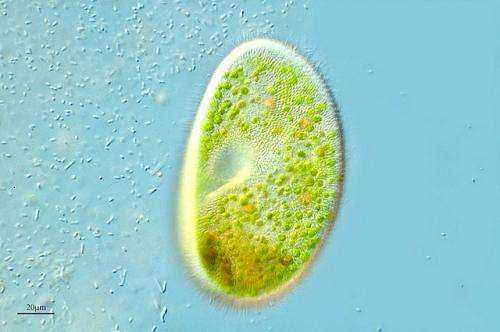Researchers encounter rare chlorella infection

A 30-year-old Western Australian man has become the second ever in the world to be diagnosed with a Chlorella wound infection.
The finding was published recently by researchers from PathWest Laboratory Medicine WA, Bunbury Regional Hospital and The University of Western Australia.
A unicellular algae of the family Chlorellacaea, Chlorella are found in fresh water, salt water and soil and have been known to infect sheep and cattle, generally through the intake of stagnant water contaminated with sewage or pastures irrigated with raw sewage.
The only previous case of wound infection in a human involved a 30-year-old woman in the United States who had a recent surgical wound infected after canoeing in a river in Nebraska.
Dr Julie Hart from PathWest says the WA patient presumably had Chlorella inoculate into a laceration on his knee which he received when jumping off his bicycle into a freshwater dam.
Initial treatment involved cleaning and suturing the wound, but two days later it had developed swelling, redness and a serious discharge.
This is consistent with Chlorella commonly inducing a strong granulomatous reaction, in which the immune system attempts to wall off substances perceived to be foreign but which it is unable to remove.
When the wound was opened up, doctors found a green-brown pus and evidence of necrotic fat.
They undertook a treatment of wound debridement and negative pressure and commenced the antibiotic ciprofloxacin when deep-tissue specimens grew Aeromonas hydrophilia, a heterotrophic Gram-negative bacterium.
Further incubation of specimens resulted in bright green colonies of unicellular organisms consistent with Chlorella.
Dr Hart says the infection is considered opportunistic.
This could be attributed to Chlorella's life cycle being characterised by endosporulation, a form of reproduction involving long periods of dormancy.
Still, the infection offers clinicians and the public a reminder to be aware.
"There are many bacteria in fresh water that could more commonly cause infection of a wound, for example, Aeromonas species, Pseudomonas species, Pleisiomonas species and Edwardsiella tarda," Dr Hart says.
"For clinicians, Chlorella infection should be considered in wounds contaminated with fresh water from rivers and dams.
"Both human cases appear to have responded to surgical debridement and wound management, so these strategies should be the main focus of fresh water-contaminated wound management, to prevent and treat infections with unusual environmental organisms, such as Chlorella."
The patient saw his wound heal following three weeks of treatment, with no further complications noted.
More information: onlinelibrary.wiley.com/doi/10 … 002/nmi2.50/abstract

















